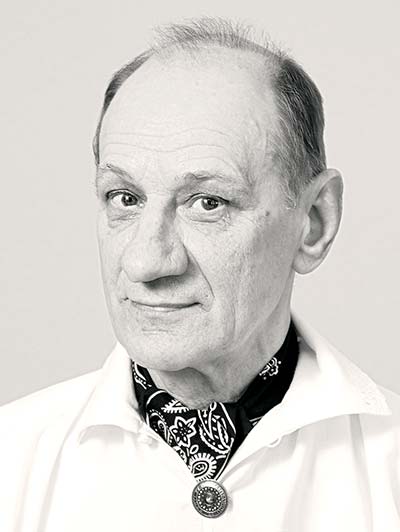Modris Gipmanis
1937
Ballet soloist, choreographer
Born 25 November 1937 in Abava Parish. Studied at the Rīga Cultural and Education Technical College (1951–1955) with distinguished personalities such as Arvids Donass, Elga Drulle, Irēna Strode and Uldis Žagata. He also attended ballet classes at the M. Baranova Ballet Studio.
Danced with the Rīga Opera House (1960–1964), soloist at the Latvian State Philharmonic (1965–1968) and the Daile (Beauty, 1968–1983) State dance ensemble. The time with Daile is special – the artist participates in Latvian dance parades at Moscow’s Bolshoi Theatre and the Kremlin’s Congress Palace, goes on a unique concert tour of Volga cities (1970) and is applauded in France, Finland, Japan and Germany. Latvia’s most prominent character dancers perform in five dance concerts at the Daugava Stadium during the 1985 Dance Celebration, performing Uldis Žagata’s Sendancis (Ancient Dance). Gipmanis is at the forefront of these dancers. He is characterised by refined plasticity, strong artistry and striking individuality. Even long-known dances Diždancis (Grand Dance) and Raibie cimdi (Multi-coloured Gloves) take on a new form when performed by him.
Worked as a répétiteur with the Kalve (Smithy) and Laima (Goddess of Fate) folk-dance ensembles (1975–1980). Enjoyed especially successful cooperation with Aija Baumane, working as répétiteur for the Rotaļa (Dancing Game) folk-dance group (1974–1989). It is during this time that the dance group rises to an unprecedented level – it ranks 1st in the 1983 Dance-celebration review and receives the title of Merit Folk-dance ensemble. At the next Dance-celebration review in 1985, Rotaļa was recognised as the best dance group and received the honorary Latvian SSR Order of Merit title. Inspired by the dancers, Gipmanis creates choreographies that are noticed and rewarded in dance competitions, performed at regional and national dance festivals: Skaisti dziedi, lakstīgala (Beautifully Sings the Nightingale), Zīlīte, žubīte (Tomtit, Finch), Trīs sidraba upes tek (Three Silver Rivers Flow), Kreicpolka and Bārtas dancis (Bārta Dance).
Since 1990, the artist has been directing the Rotaļa (Dancing Game) middle-generation dance group and the Sendancis seniors’ group. The ensembles’ repertoires are artistically diverse and interesting – they dance Latvian ethnographic dances and their arrangements, but also stage dances, historic ballroom dances, as well as schlager dances, gaining genuine public appreciation.
A Chief choreographer at the 10th Dance Celebration.
He has received the Rīga City Council Department of Culture’s annual Baltais zvirbulis (White Sparrow) award (2008) and the Cabinet of Ministers Award (2017).
